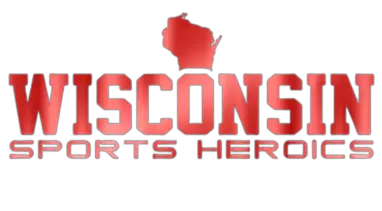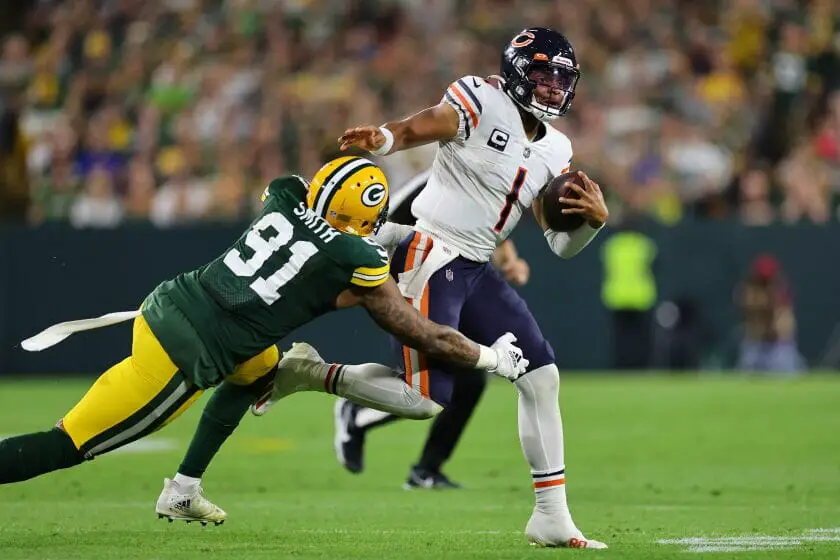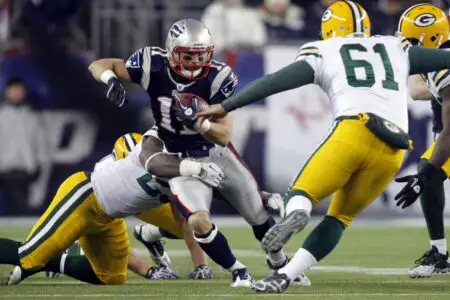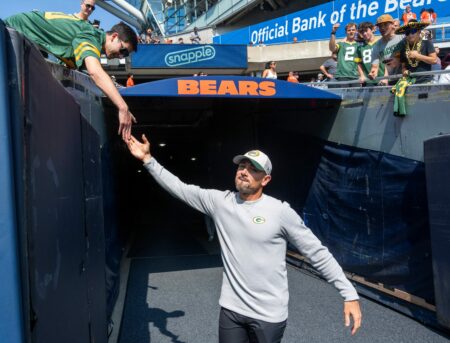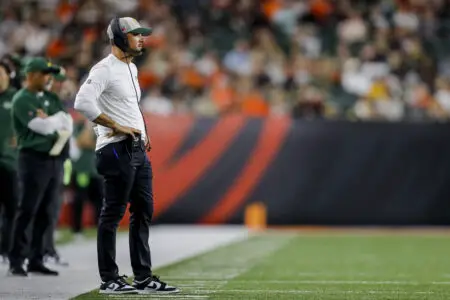Facing off against the Chicago Bears this past Sunday, the Packers were able to secure their first win of the season. Bouncing back from a disastrous week 1, the defense played a major part in the victory. Although there were frustrating moments – notably on run defense – Joe Barry’s unit racked up 3 sacks and an interception and held Chicago to 10 points, 48 net passing yards, and a 1-out-of-7 third down conversion rate.
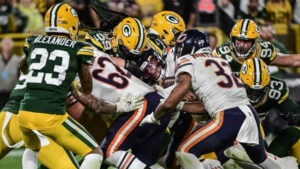
Arguably one of the most important plays of the game came in the 3rd quarter. After disappearing following a score on the initial drive, the Bears offense began to put together another opportunity to eat into Green Bay’s 14-point lead. Plays of 9, 11, and 18 yards gained them a first down in Packers territory. Runs of 2 and 6 yards from David Montgomery got Chicago to a 3rd & 2 at the GB 23.
If the Bears ended up converting this 3rd and short, they could very well go on score a touchdown to slice GB’s lead in half. Luckily, Joe Barry dialed up a well-designed pressure to shut down the play, resulting in a loss of 3 yards and a FG attempt.
The Play
With a highly-mobile QB like Justin Fields, defenses always have to be prepared for the read-option. If you’re unfamiliar with this type of play, here’s a simplified description. The read-option is a run play designed to put a member of the defense in conflict – often an edge defender. Generally, the QB will start the play by extending the ball as if to hand it off, while simultaneously reading the conflict player. If the defender crashes down on the running back’s path, the QB keeps the ball and takes off. If the defender “sits” to prevent the QB from running, the QB hands the ball off to the back.
On this 3rd down, the Bears run read-option out of 11 personnel (1 RB and 1 TE). The receivers and TE line up in a 3×1 formation, spreading the Packers defense out. Fields is in shotgun with Montgomery to his left, and he appears to be reading the MIKE (De’Vondre Campbell). The Packers defense is matching the Bears with a “Penny” package. This is a type of nickel formation, with an extra DB on the field. However, instead of taking one of their DL off the field – as in their typical 4-2-5 nickel package – the Penny package subs an inside linebacker out while keeping their 5 man defensive front intact. This gives the defense a better ability to clog up interior runs, while still getting a slot cornerback on the field.
The Pressure
Anticipating the read-option, Joe Barry calls a pressure designed specifically to eliminate the conflict the play uses to succeed. The pressure sends Campbell and the three interior lineman up the middle, while dropping the OLBs (Preston Smith and Rashan Gary) out as QB spies.
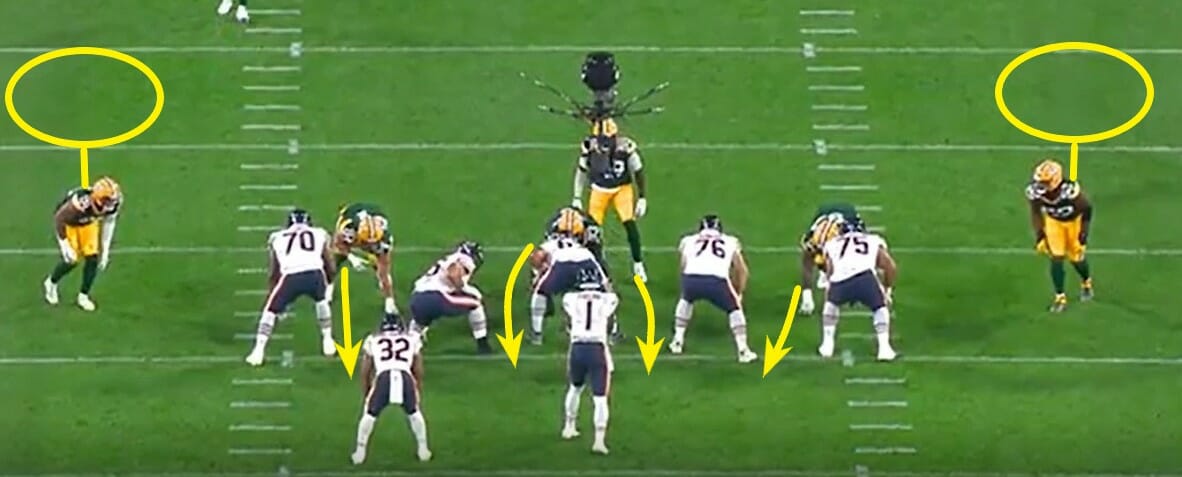
The call appears to be similar to a number of other pressure calls. One of its closest relatives is “Hips Mike Peel 1,” a blitz from the playbook of Jason Tarver, Raiders DC from 2012-2014. One of Joe Barry’s early mentors – Keith Burns – was an assistant coach on the Raiders STs units in 2012 and 2013. Presumably, that connection helped provide some of the inspiration for Barry’s call. Here’s a diagram of Hips Mike Peel 1.
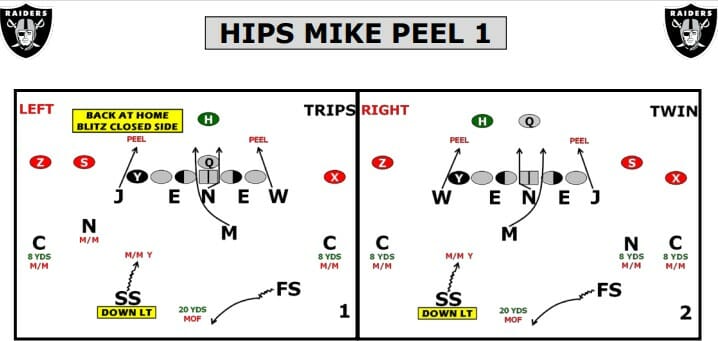
Like in this diagram, the Packers secondary is in man coverage with a deep post safety. The NT slants to the back, while the MIKE inserts to the opposite A gap. The OLBs play it differently in Barry’s version, however. The original call has each of them rushing, with the possibility of peeling off into man coverage on the back if they get a release to their side. Barry modifies this aspect of the call to better handle the read-option. Both OLBs drop with their eyes on the mesh point and the QB. The interior pressure means that the OLBs don’t have to worry about the inside run. Instead, they can concentrate solely on containing the QB.
The Result
Spotting the MIKE spiking into the A gap, Justin Fields pulls the ball to run. However, the design of the call frees Preston Smith to play the QB all the way. Although he doesn’t make the tackle, Smith slows Fields up in the backfield long enough for Jaire Alexander and Dean Lowry to finish him off for a loss and a 3rd down stop.
Conclusion
There have certainly been some questions about Joe Barry’s playcalling on defense so far this season. However, this play provides at least one example of a well-designed and executed counter to the offense’s plan. If the Packers don’t make this critical stop, the game could have gone quite differently. Hopefully the defense will provide more of these big stops as the season goes on.
For More Great Wisconsin Sports Content
Follow me on Twitter at @Sam_DHolman and follow us @WiSportsHeroics for more great content. To read more of our articles and keep up to date on the latest in Wisconsin sports, click here! Also, check out our merch store for some amazing WSH merchandise!
